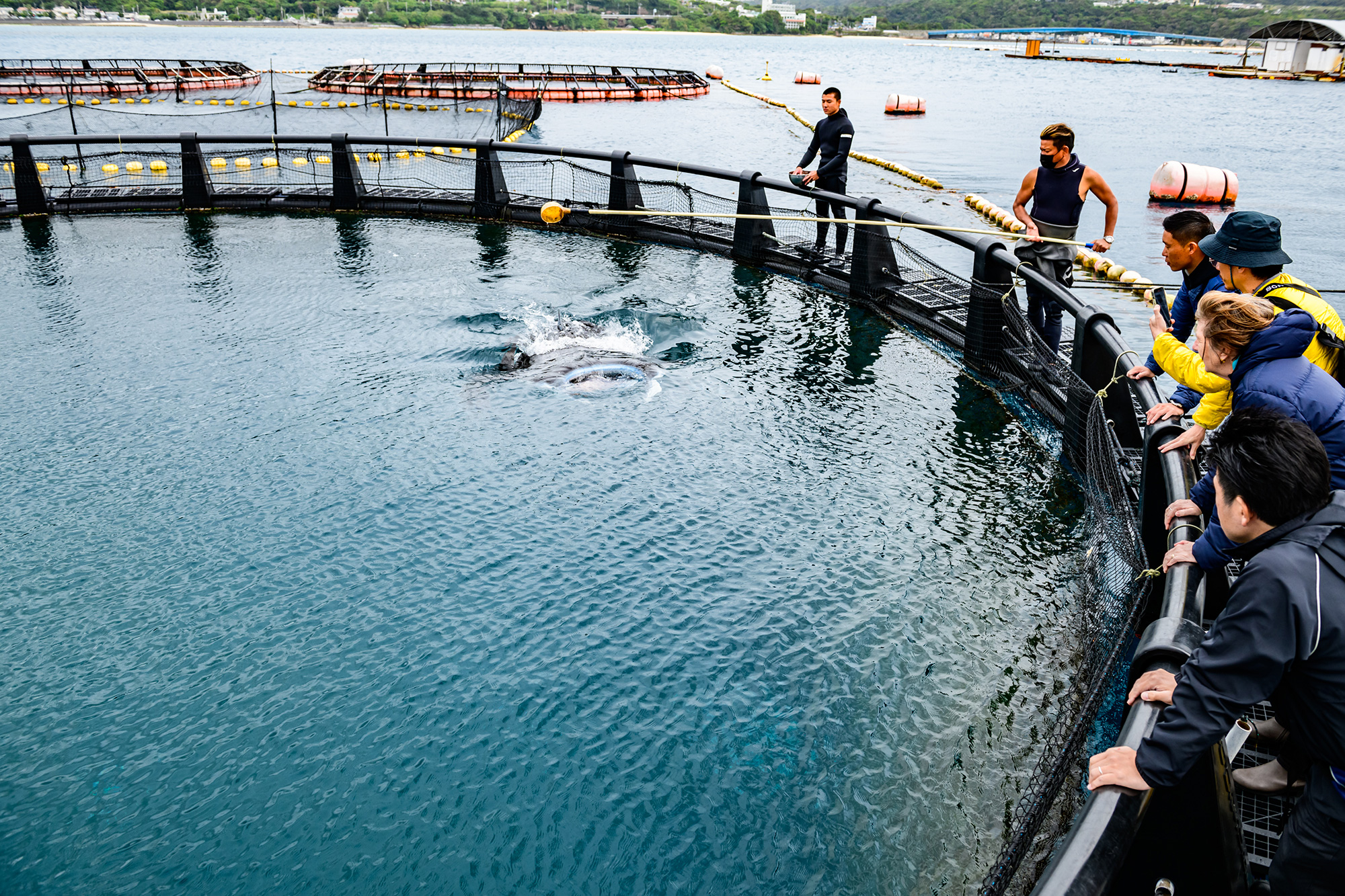Book Now
This score and word-of-mouth content are provided to Google,
Posted as a summary of Goole ratings and reviews


Our story is your story.
STORY - Mar. 2023
Protect Life, Connect with Life
Awareness & Learning in the Simple Experience of Provisioning
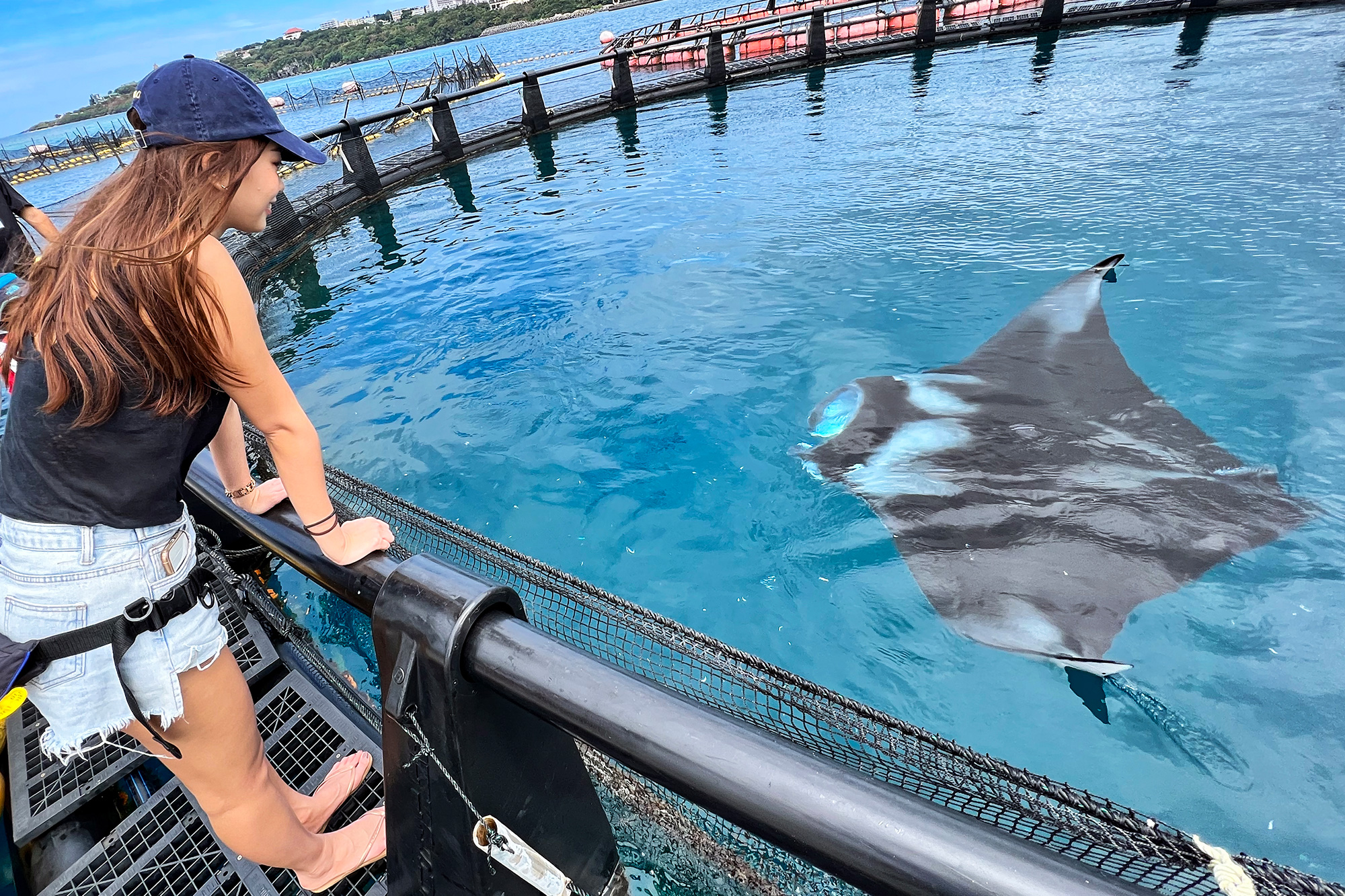
Yamakawa Port is a small port located on the Motobu Peninsula in the northern part of Okinawa. A 5-minute boat ride from the port takes you to a marine life preserve right in the ocean where sharks, rays, mantas, and other marine life are taken care of.
Marine life kept there is fed twice a day, at 10:00 and 14:00. The Oh-Sakana Company, Ltd. (OSC) manages the preserve and uses the feeding times to provide daily tours for guests to observe how marine life is cared for.
You might think this is a program for families with children. However, this powerful experience allows you to see what it means to feed large sea creatures from a completely different perspective than watching through windows in aquariums. Your five senses will be stimulated and your intellectual curiosity aroused. Recently, it seems that OSC’s social media posts are attracting many different people.
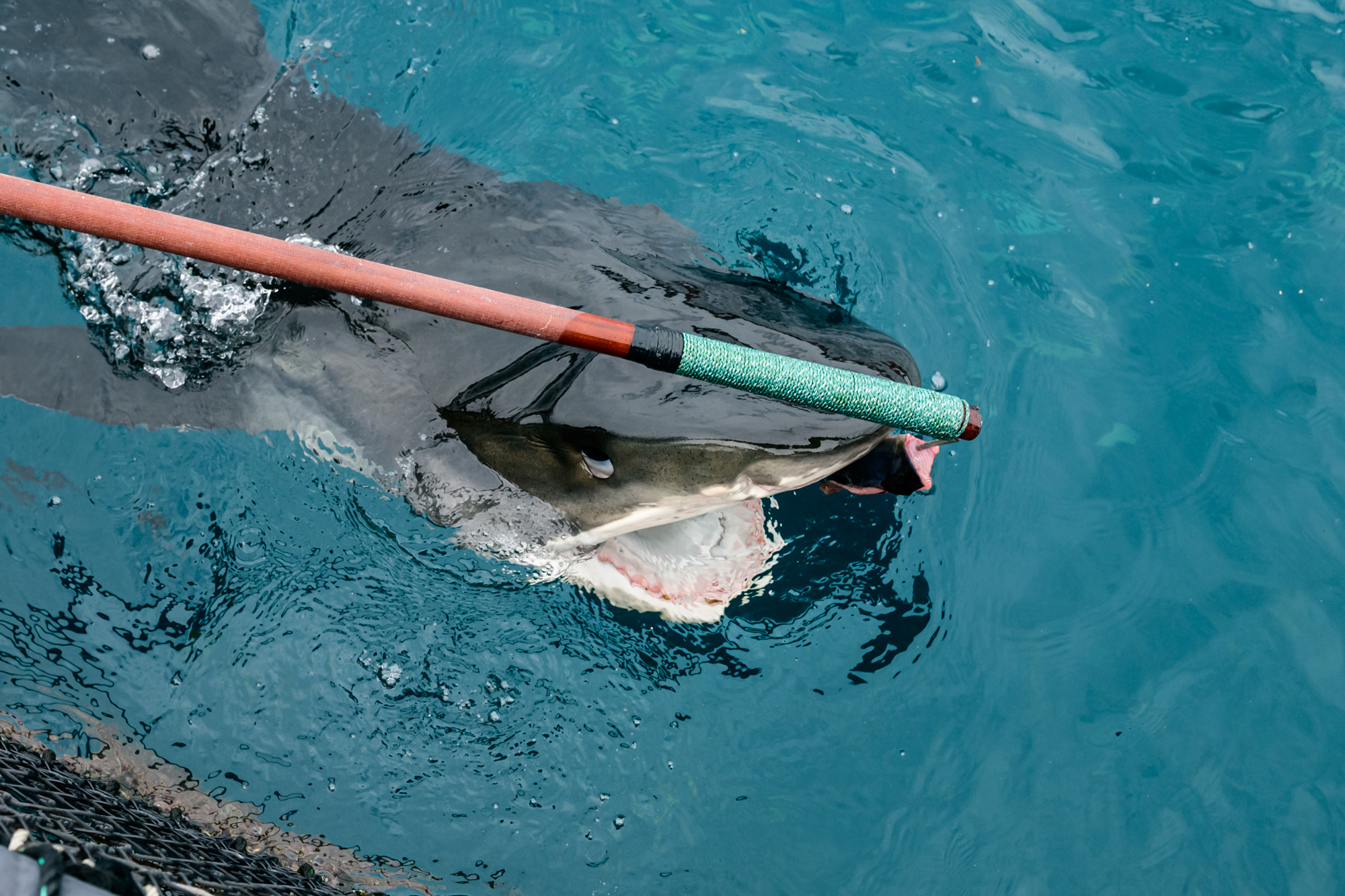
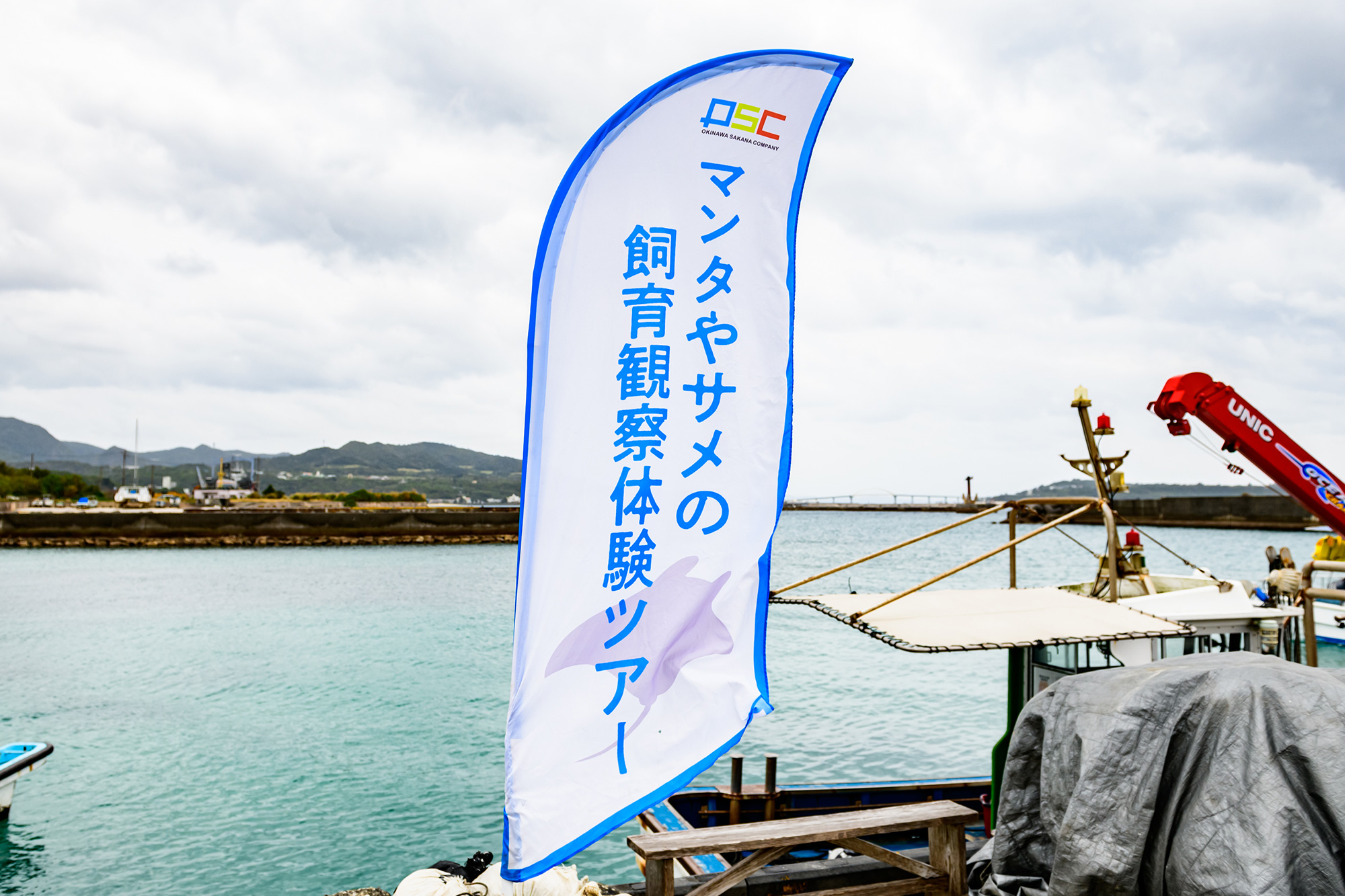
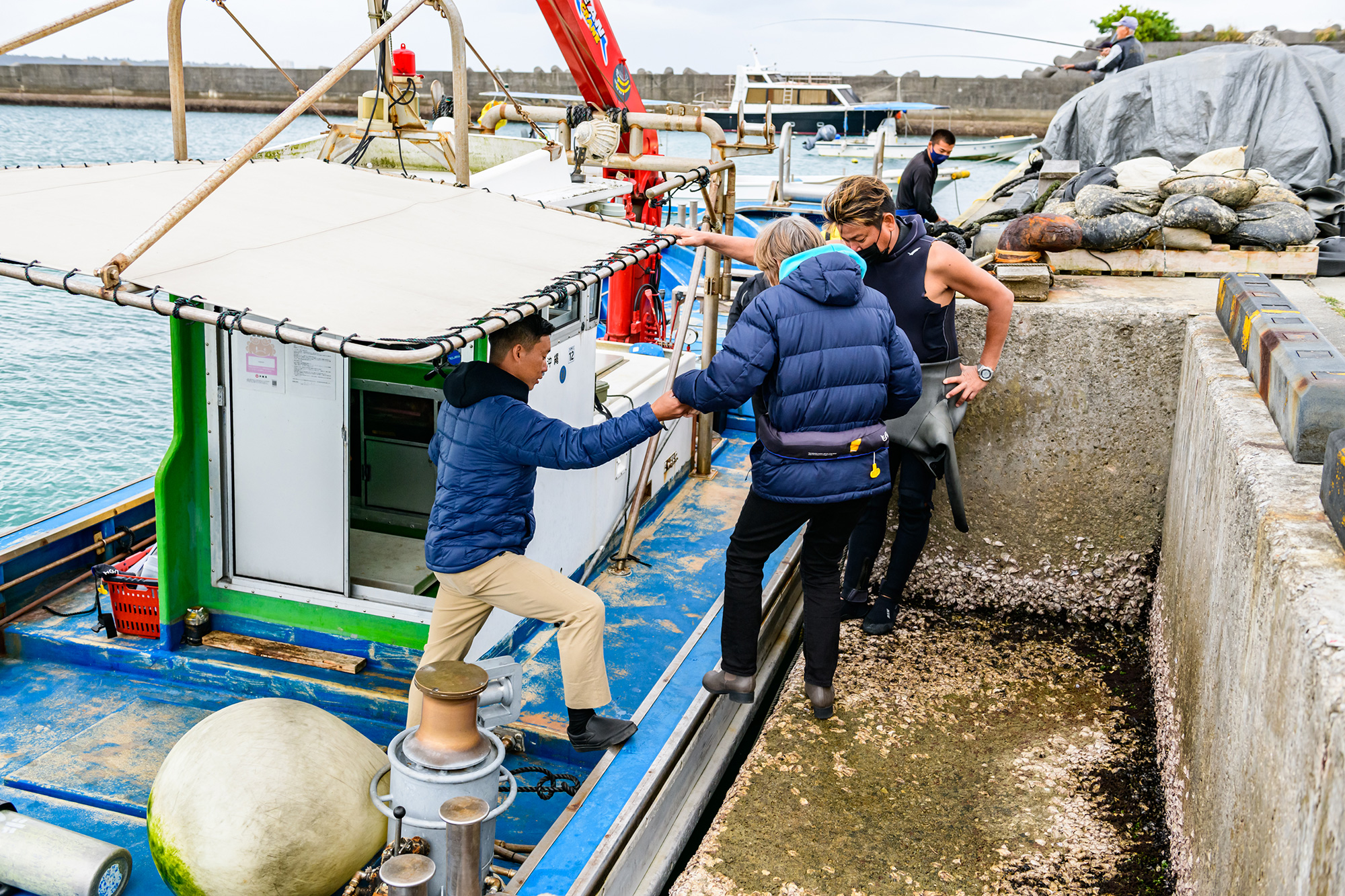
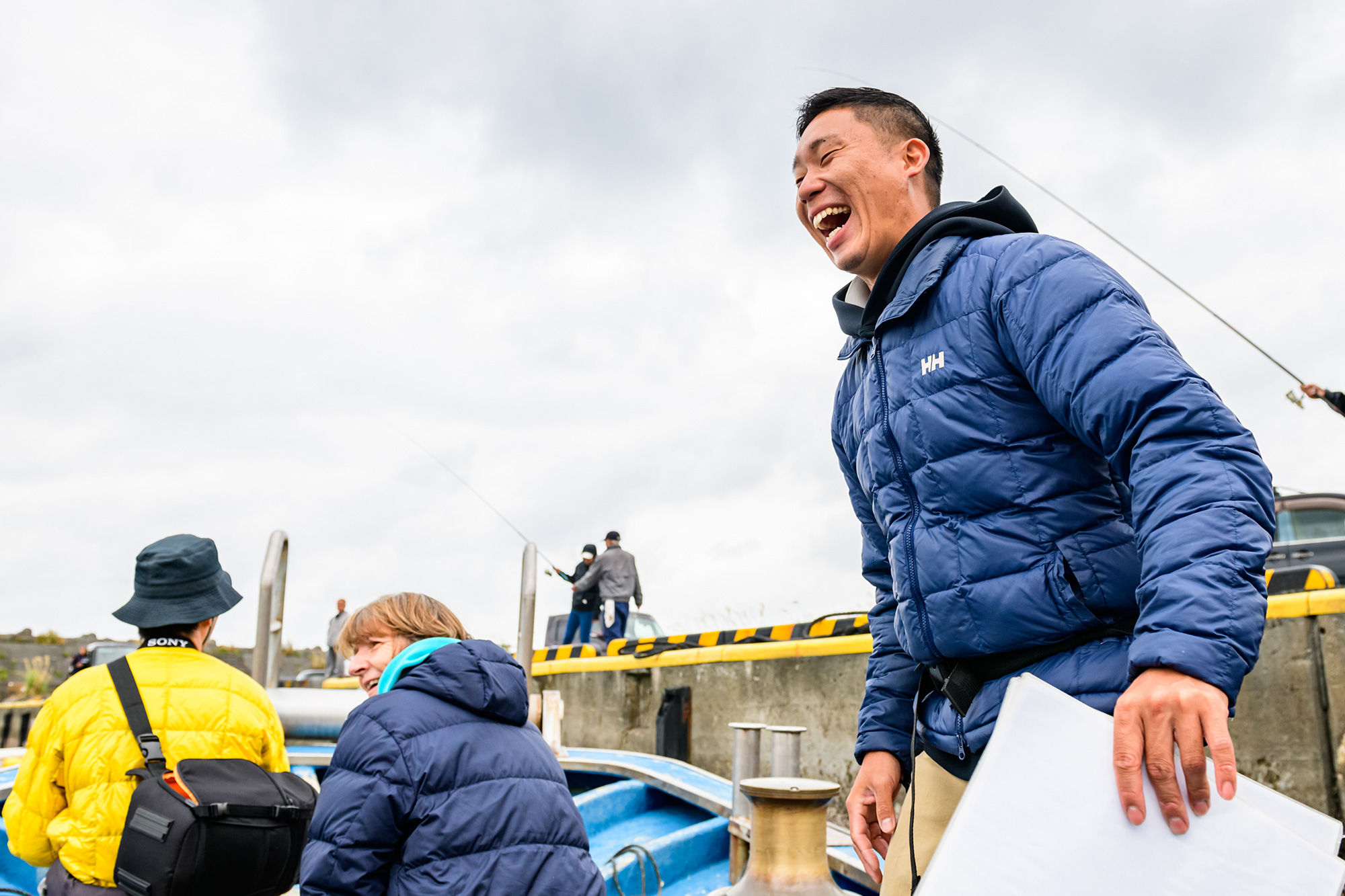
Relying on the car navigation system we drive down a small village road that makes us wonder, “Is this the right road?” The small port is not widely known as a port, but it is a popular fishing spot for locals. Today there are a lot of people fishing. When we park the car and head towards the flag indicating the tour meeting place, we see Mr. Mitani waving at us. Yuta Mitani, our guide for the event, as well as most of the staff who work at OSC are professionals who have been working with marine life for many years. They are motived by a desire for sustainable regional development while protecting the natural environment.
After signing a consent form, we are handed compact belt-type waist life jackets—not the vest kind we are familiar with. This life jacket is filled with gas which inflates like a float when it senses falling into the water. It is easy to move in but it doesn’t feel like a life jacket. Mr. Mitani reassures us, “There has never been a situation when it has been triggered.” We board the boat with relief.
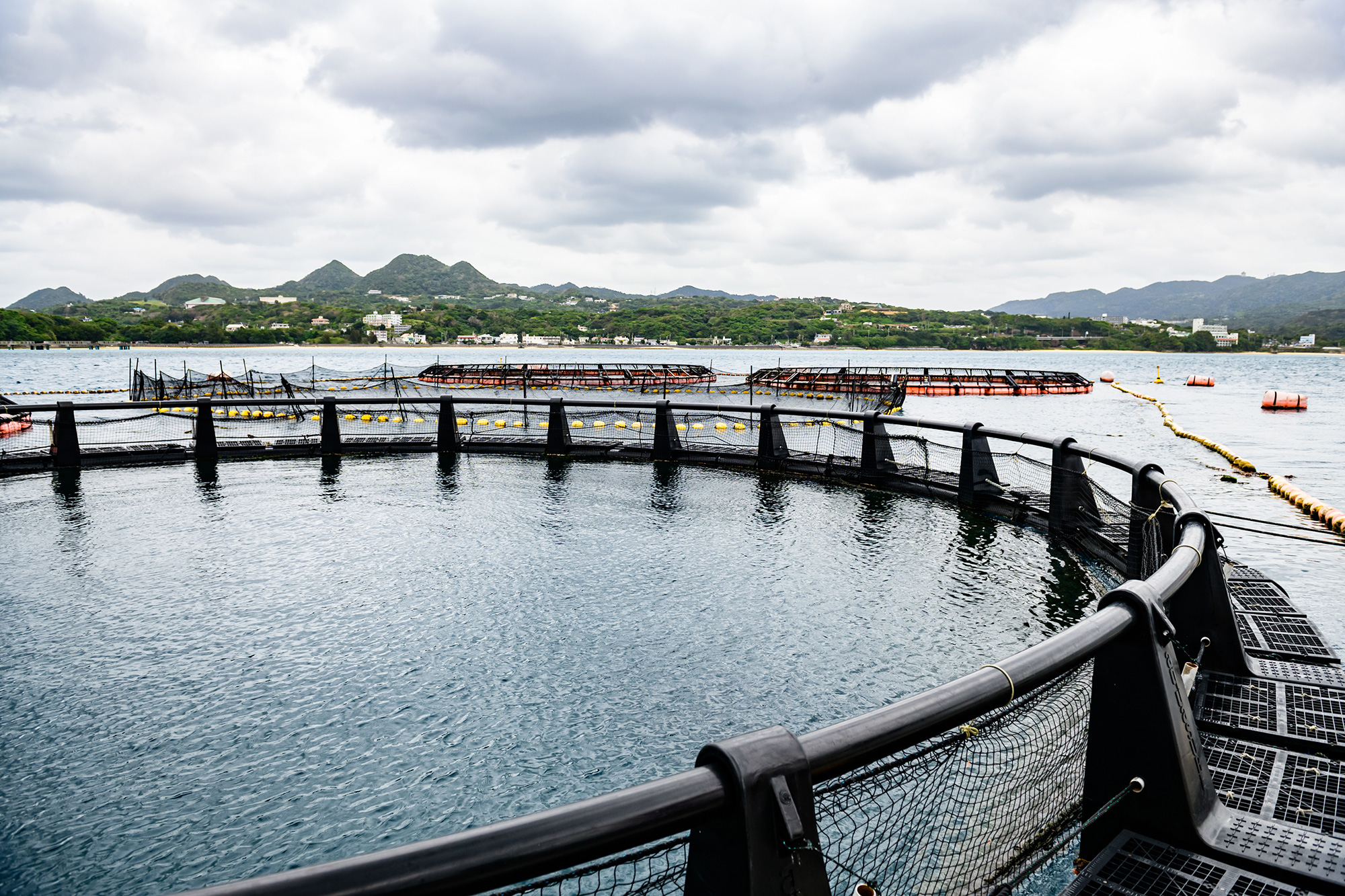
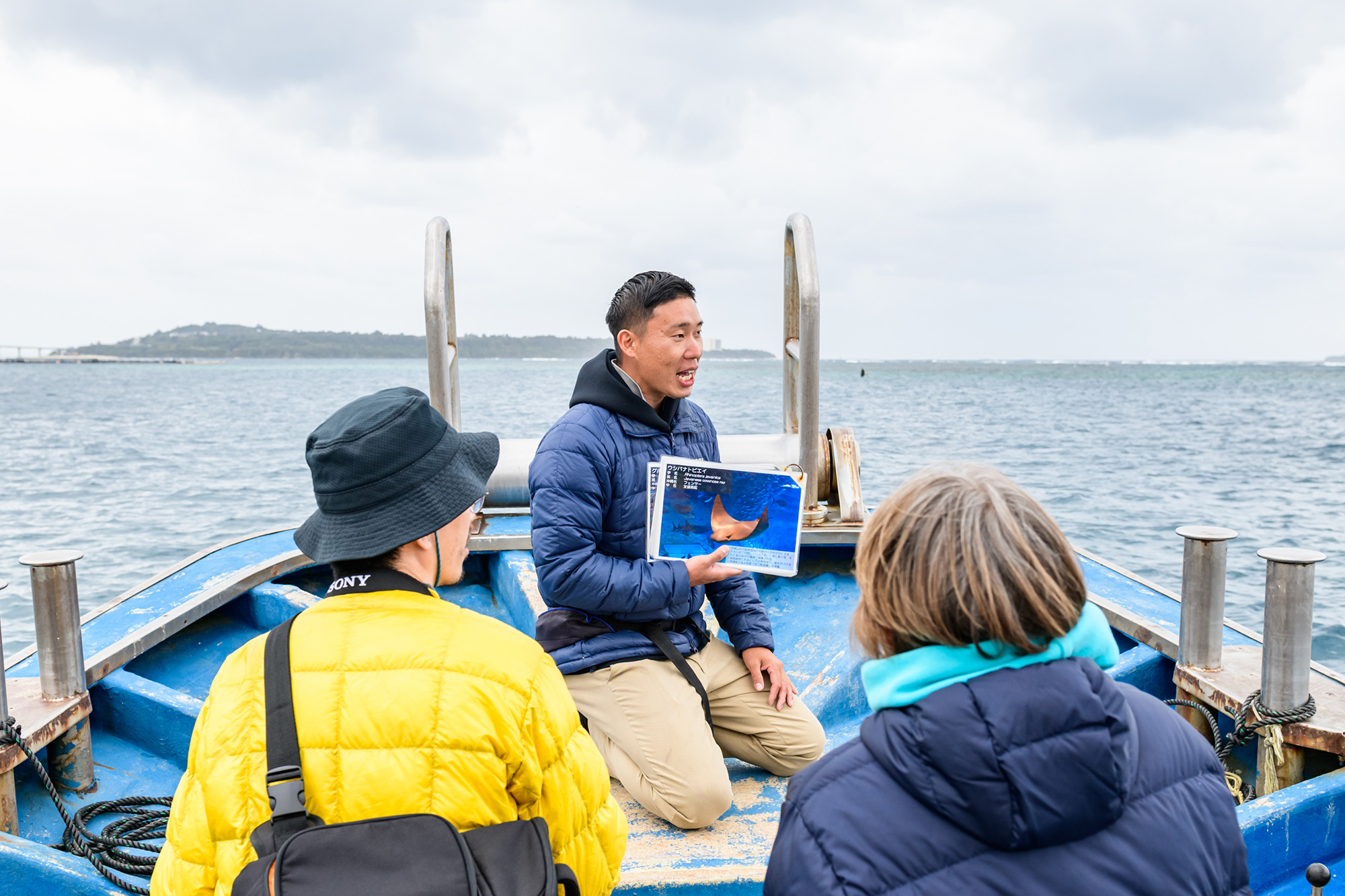
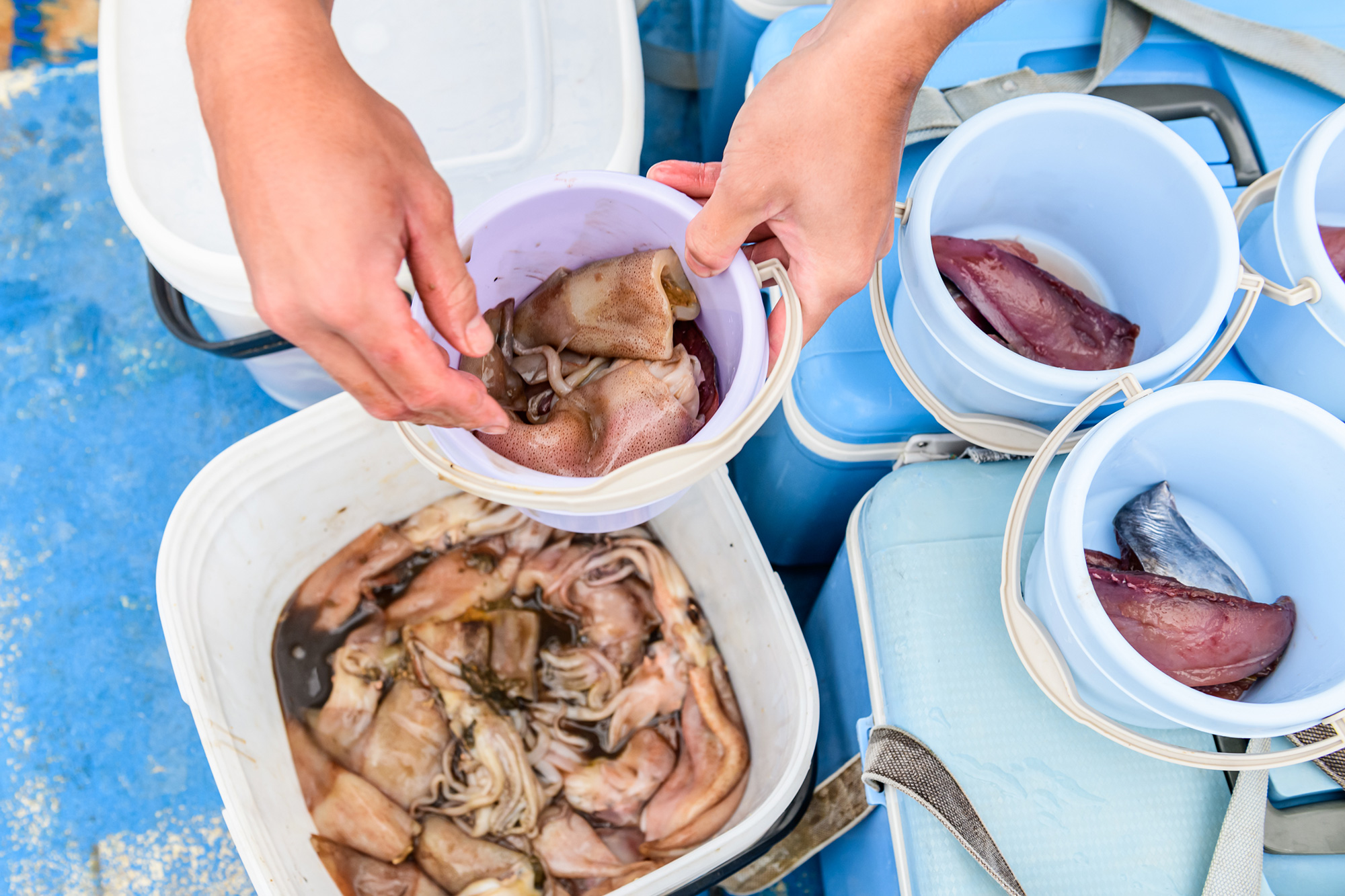
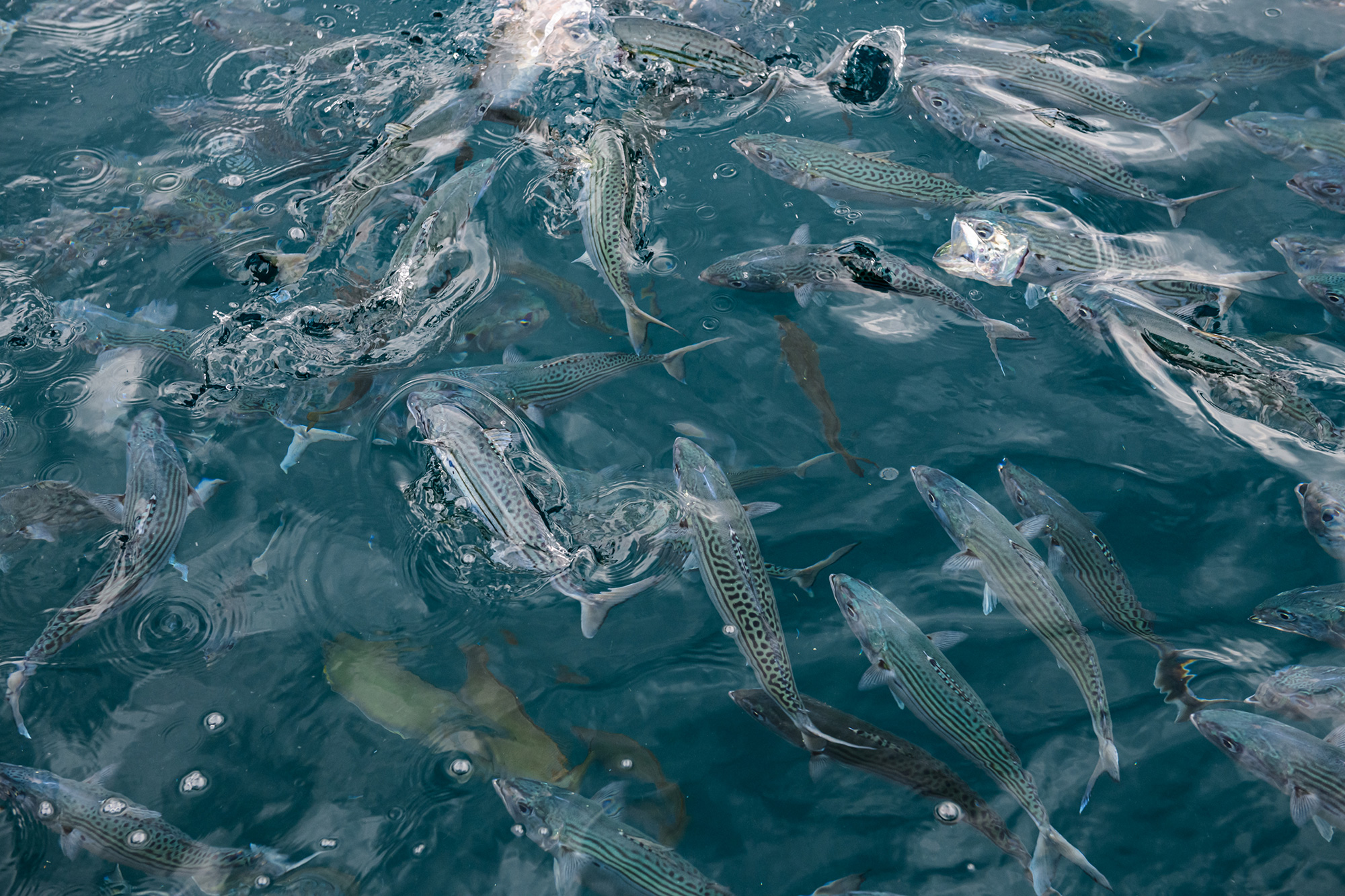
It is only 5 minutes in the small boat and listening to stories about marine life in the preserve or about the humpback whales that come to the Okinawan waters from January to March distracts you from any discomfort on the boat. The preserve hosts 6 large holding areas with a depth of about 6 meters. They are encircled by curtain-like nets stretched all the way to the bottom to prevent unwanted marine life from coming in.
Unlike an aquarium where you can observe the same conditions every day, the open ocean changes in transparency and fish behavior depending on the weather and season. From spring to summer when the water temperature is rising, the marine animals become more active and eat better. However, feeding is necessary every single day. Tours are available year-round but are cancelled for dangerous conditions such as strong winds or lightning. Every day of the year may be different, but tour participants seem to understand and are able to appreciate nature just as it is.
We are going to stop at 3 holding areas. The first one holds a species of mackerel and stingrays. Raw cut up squid and tuna are the feed of the day. We grab buckets and get down on the float that surrounds the pen. The fish recognize feeding time when the boat approaches. Different animals have different eating habits and we feed the stingrays first before the mackerel. The stingray has a modest feeding habit, but as soon as food is dropped for the mackerels, they go after it with great ferocity. We are amazed by the intensity.
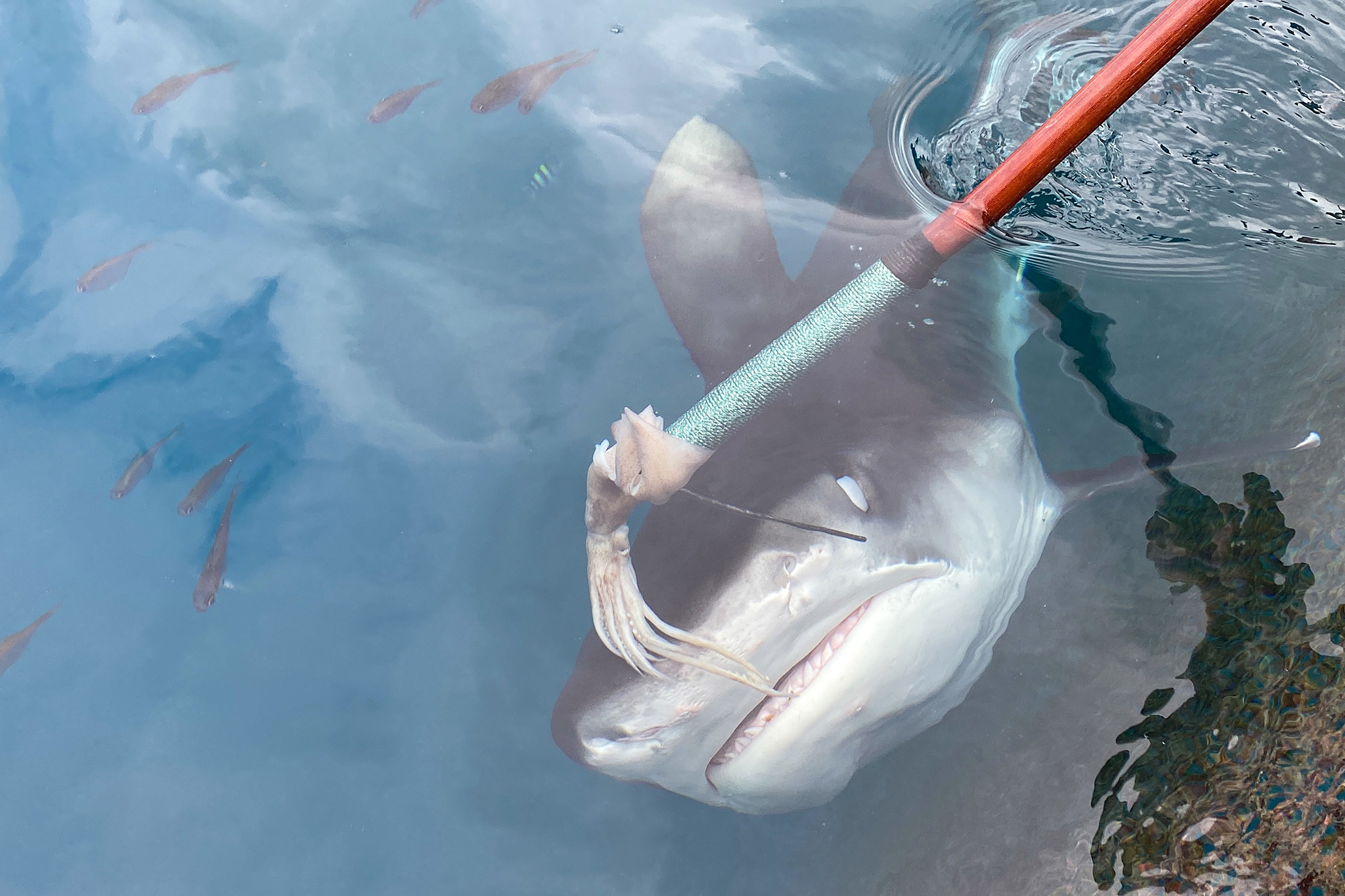
When the feeding buckets are empty, we return to the boat and move to the next holding area. It is the dangerous shark cage. Here is a tiger shark which is said to be the 2nd most dangerous shark after the great white shark. Tiger sharks inhabit the waters around Okinawa but it is difficult to keep them in aquariums for any length of time. This tiger shark was born in the aquarium and is now 5 years old. There are no facilities anywhere in Japan that can accommodate sharks that are 3 meters long. And so people from all over Japan come to see this one. Maybe it is more popular than the manta rays.
The staff feed the sharks. The sight of the shark opening wide its mouth and rolling back its eyes to eat from the end of a stick is stunning. Clinging to the rail on the raft, engrossed watching the shark, and feeling nervous in case of falling creates new sensations for us. But looking closely at the shark, we are also drawn to its beauty.
There are several species of small fish living with the shark. These are fish that came in through small gaps in the net, ate the scraps left by the shark, and grew big enough to make escape impossible. Although size and species are so different, it seems they coexist well in the preserve.
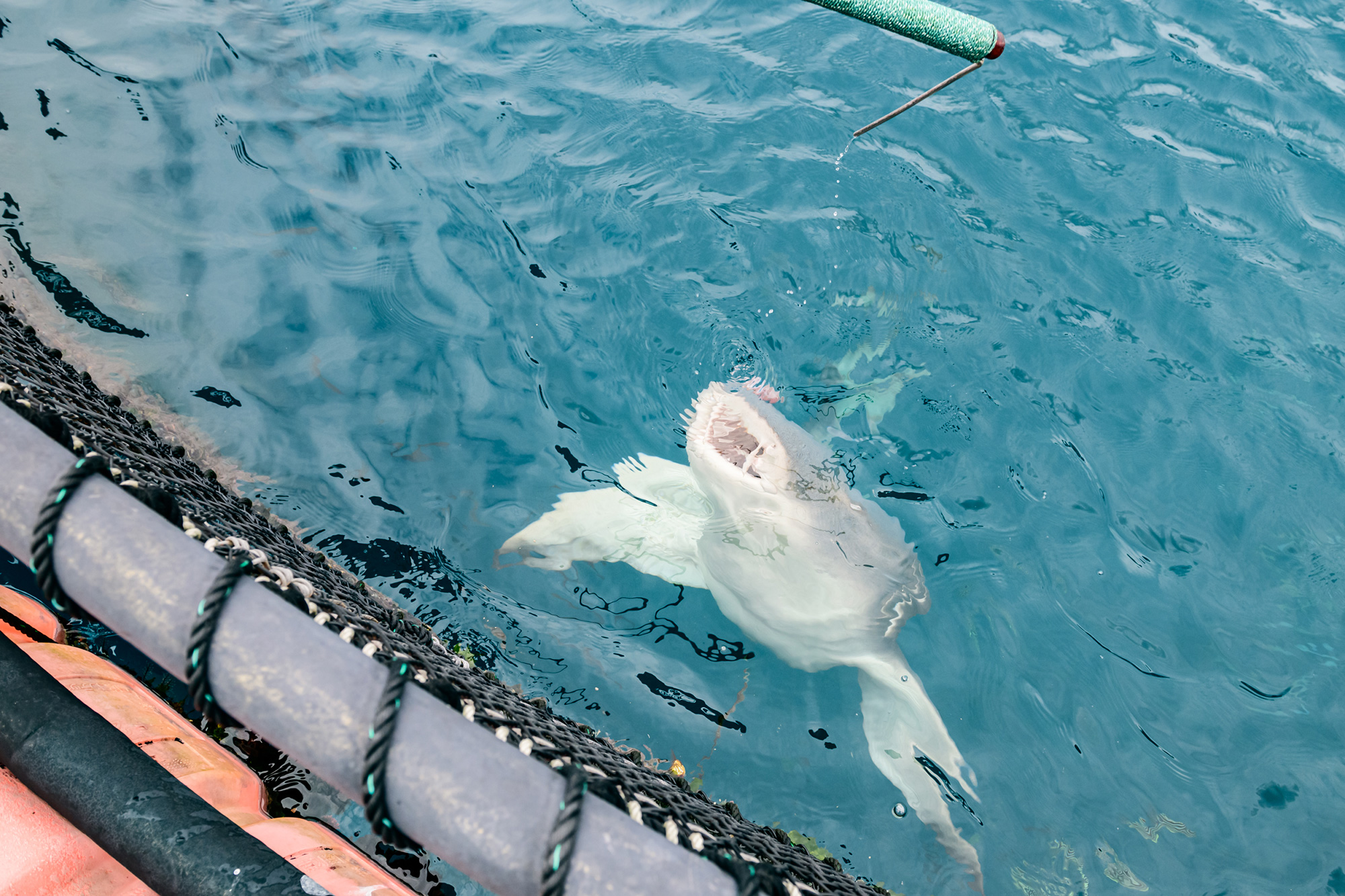
Finally, we move to the holding area with the manta rays. Mantas have large bodies and mouths, but they eat plankton in the wild. Here krill is their main diet mixed with finely chopped mackerel and some other things to carefully maintain a nutritional balance. Using a ladle, the bait is dropped gently into the water. The manta sucks in the bait along with a large amount of water. If there is garbage on the surface of the water, there is the risk that it will also be eaten. And so the staff always go in the water to clean the surface before they feed the mantas. Recently in Okinawa, there was a lot of pumice floating in the water and cleaning was very difficult. While the staff are cleaning, we are shown the jawbones of sharks and mantas. Both species are cartilaginous fish but teeth shape and size as well as mouth size differ greatly among species. Some jaws are big enough to put your head into; others are too small to fit your fist into. It is very interesting to learn that these creatures have many layers of teeth that are coarse-grained.
After the surface of the water is cleaned, the ladle is used to lightly tap the water. At the sound, the mantas that have been on the bottom rise up to the surface and begin to swim in a clockwise direction so as not to bump into each other. Again, the sight of these magnificent creatures feeding is fascinating. After eating four ladles of food, the manta returns to the bottom. We are amazed at the intelligence of the mantas. Our experience was an hour long but it was over in the blink of an eye.
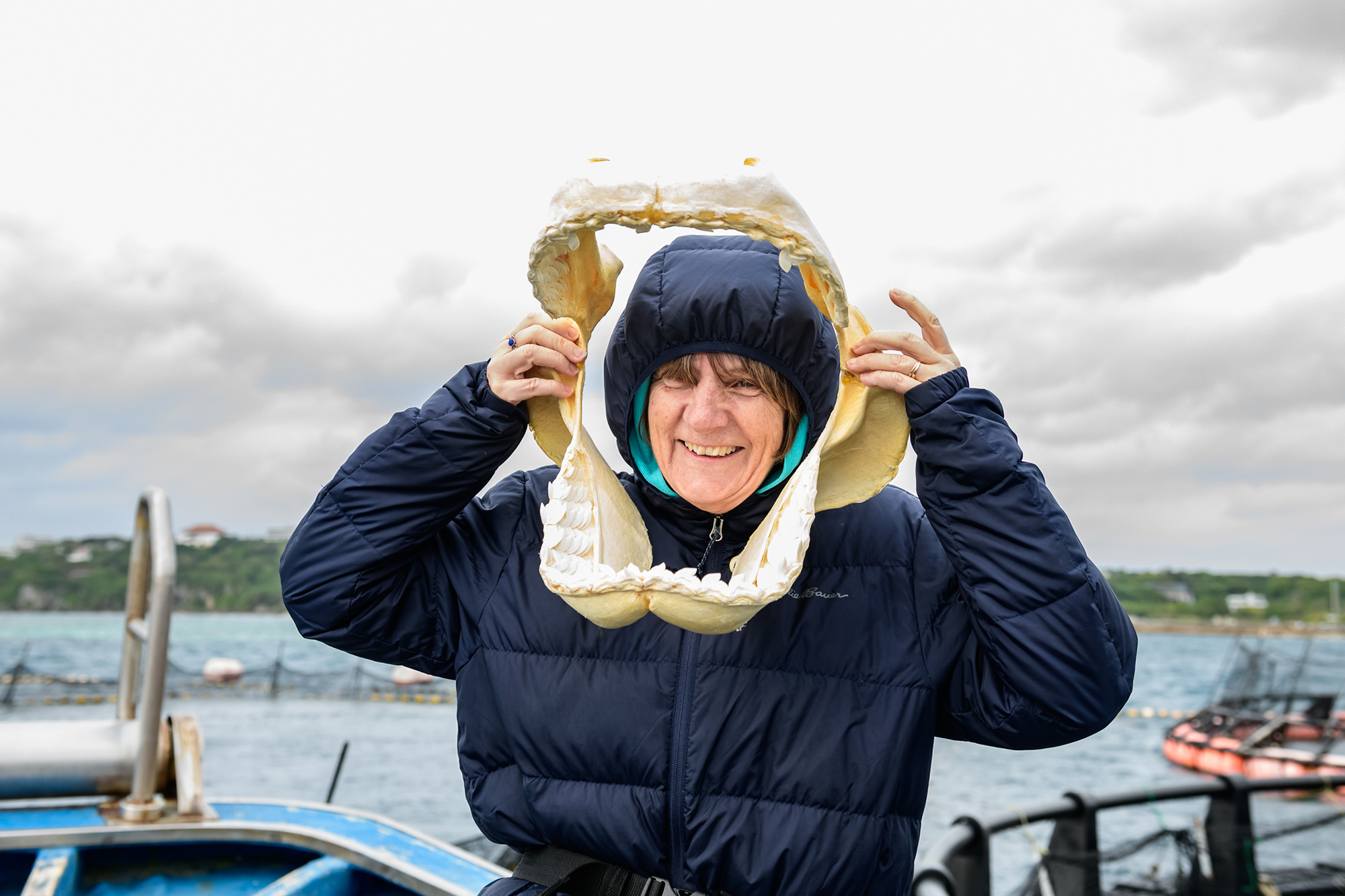
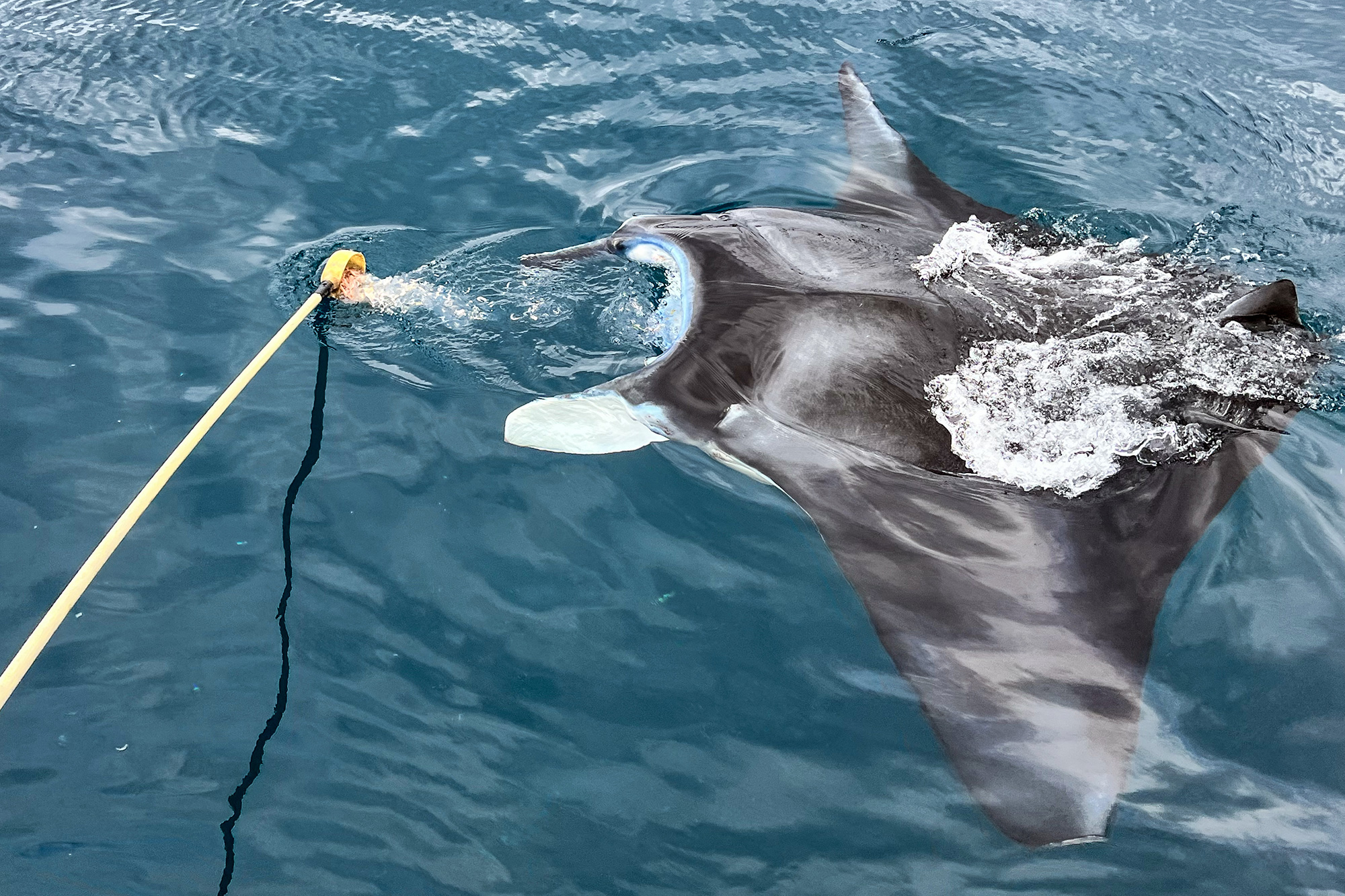
“There are so many things that I would like to share with you such as the differences in eating habits among different species of fish and about the environment in which they are kept. Many people come to visit and everyone has different views about the marine preserve. Westerners especially do not view this as a recreational activity and they have concerns about whether the preserve is a suitable place for these animals. Our challenge is to communicate openly. Although my English is not so good, I would like to prepare some materials so that we can clearly communicate with as many people as possible. Of course, we welcome questions from enthusiastic children as well. I have a desire to satisfy their intellectual curiosity.”
(Yuta Mitani, Breeding Technician, Breeding Management Section 2, OSC)
One of the attractions of this tour is that you also get to hear behind-the-scenes information about the aquarium, the marine technicians, and other stories you won’t hear anywhere else. With your ticket for this event, you can buy the Churaumi Aquarium admission ticket together as a set. Going to the aquarium after this gives you a unique perspective on everything you see. Here at Oriental Hotel, we encourage you to spend a full day in the northern part of Okinawa not only having a lot of fun, but also learning about and interacting with the ocean around Okinawa. And we hope you will use this opportunity to think about the environment.
Our work is based on the concept of showing the richness of Okinawa’s oceans to the world. We desire to use technology “to leverage, to move, to show” marine life which makes up Okinawa’s abundant resources. We desire to increase the value of previously unused resources and thereby create a cycle of adding value to the local economy.
You can also experience swimming with the manta rays at our preserve in Motobu. We hope you will incorporate learning about the rich resources of Okinawa into your travel plans.
